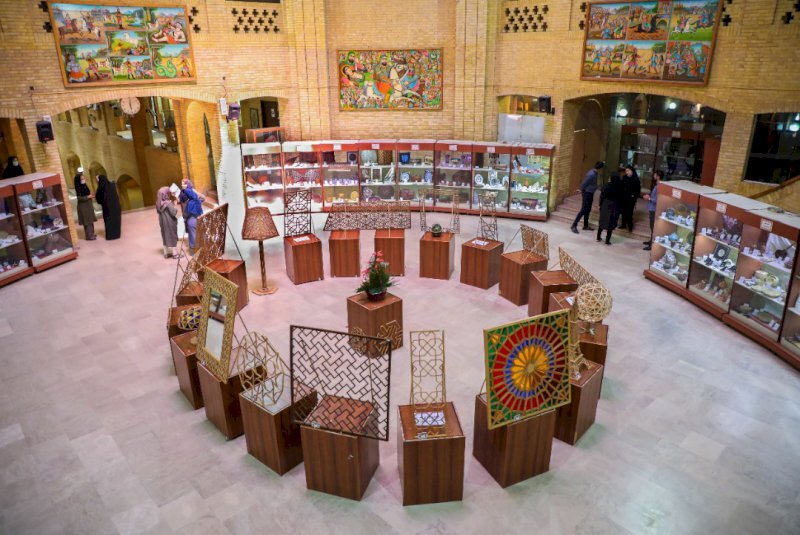INSUBCONTINENT EXCLUSIVE:
Cultural Heritage, Tourism, and Handicrafts in Tehran.A total of 21 artworks by the Iranian crafter Abbas Yazdipur have been selected for
the exhibit, which will come to an end on Thursday, CHTN reported on Tuesday.The works include mirrors, photos and window frames, the report
added.The art of "Gereh-chini", literally meaning to arrange the knots, is one of the traditional decorative and useful handicrafts of Iran
It relies on the art of laying finely cut pieces of wood on a surface according to a design.Gereh is composed of geometric knots that are
repeated beautifully and rhythmically
Isfahan is its birthplace, and the Seljuk dynasty is known to be the first time Gereh-chini was used
However, the exact date of the craft's origin cannot be determined
The art flourished during the Safavid era.In Gereh-chini, wood pieces are used in their natural color and no paint is applied to them
Gereh is made best from plane trees, according to masters of the art.Wood from other trees such as walnut, beech, morus, almond,
silverberry, zelkova, pear, and jujube is also used to make shrine doors, pulpits, doors, frames, and decorative dividing panels, etc.Tond,
Kond, Shol, Kond o Shol, Pili, and Doroodgari are the seven types of knots or Gereh, and each of these has its own background and design
Three main categories can be distinguished among Gereh Chini: 1
Moshabbak (lattice trelliswork) and 3
Orosi or Sash window.Orosi is a type of window made by Gereh and colored glass
They are beautiful and were most frequently used during the Zand and Qajar dynasties
In terms of artistic value, Orosi is very significant.In Gereh-chini, a Gereh or knot is, in fact, a combination of pieces of wood that are
locked together in order to create delicate designs
The finer the pieces of wood, the more valuable the product.Gereh-chini pieces are made to endure in different climates of Iran with tongue
Because of this, Gereh-chini artworks can be found in many historical buildings.There are several examples still standing, including Chehel
Sotoon, Hasht Behesht Palace, and historic houses like Alam and Sheikh ol-Islam in Isfahan
There is also the House of Tabatabai in Kashan, Abbasian, Boroujerdi, Golestan Palace, and other such buildings in Yazd and Tehran
There are still Gereh-chini workshops in Tehran where this craft is still practiced.With 14 entries, Iran ranks first globally for the
number of cities and villages registered by the World Crafts Council, as China with seven entries, Chile with four, and India with three
General Assembly of the World Crafts Council-Asia Pacific Region (WCC-APR) in May 2023
Shiraz has a remarkable amount of handicraft pioneers
With an average age of 70, some of these pioneers are still active at their workshops
The occupational records of about 100 pioneers are collected and are annually praised by the custodians of the WCC General Office.Available
the coronavirus pandemic has inflicted on global trade.The Islamic Republic exported $427 million worth of handicrafts during the first
eleven months of the calendar year 1398
Of the figure, some $190 million was earned via suitcase trade (allowed for customs-free and tax-free transfer) through 20 provinces,
according to data compiled by the Ministry of Cultural Heritage, Tourism and Handicrafts
Ceramics, pottery vessels, handwoven cloths as well as personal ornamentations with precious and semi-precious gemstones are traditionally
exported to Iraq, Afghanistan, Germany, the United States , the UK, and other countries.ABU/MG

